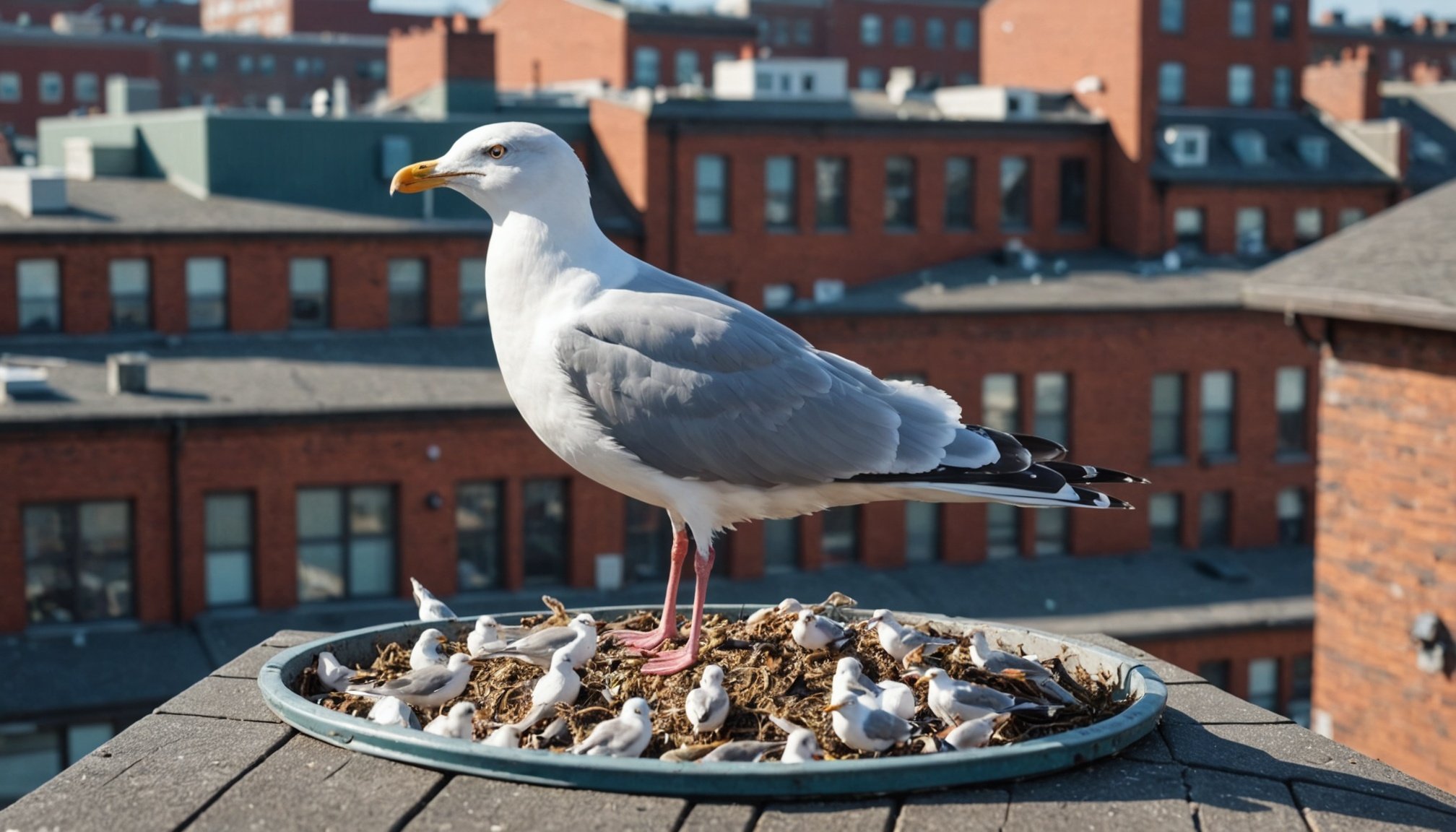Urban seagulls can cause quite a nuisance, especially when they decide to nest on your rooftop. Their presence disrupts peace and creates hygiene issues. Employing effective tactics not only helps protect your property but also promotes harmony with urban wildlife. This guide provides practical solutions that will discourage seagulls from nesting, ensuring your rooftop remains a sanctuary free from unwanted feathered guests. Dive into these strategies to reclaim your space efficiently and sustainably.
Understanding the Problem of Urban Seagulls
Urban seagulls have become a notable concern in many cities, primarily due to their unique nesting habits. These birds often choose rooftops as their preferred nesting sites, leading to several rooftop problems for property owners.
Dans le meme genre : Discover the UK Bat Species That Thrive with Your Garden Bat Box Installation!
Common Issues:
- Noise Pollution: Seagulls are known for their loud calls, which can be disruptive, especially during early morning hours.
- Structural Damage: Their nesting materials can block drainage systems, potentially causing water damage.
- Hygiene Concerns: Seagull droppings are not only unsightly but can also pose health risks.
The presence of seagulls is not merely a nuisance but also a legal matter. In many regions, seagulls are protected under wildlife laws, which means that any attempt to disturb or remove their nests must be carefully considered. This legal protection complicates efforts to manage nesting issues effectively. Hence, understanding these laws is crucial for anyone dealing with seagull-related problems.
Lire également : Exploring the Effects of Climate Change on Britain”s Native Butterfly Populations
To address these challenges, property owners can explore solutions like installing bird deterrents or seeking professional wildlife management services. These measures can help mitigate the impact of urban seagulls while adhering to legal protections.
Physical Barriers to Prevent Nesting
Implementing physical barriers is a practical approach to deter urban seagulls from nesting on rooftops. These barriers are designed to make surfaces inhospitable for nesting, thus protecting properties from potential damage.
Types of Physical Barriers
Several types of bird deterrents are effective in preventing seagulls from settling. Common options include netting, spikes, and wires:
- Netting: Covers large areas to prevent access.
- Spikes: Installed on ledges to deter perching.
- Wires: Strung across surfaces to obstruct landing.
Installation Techniques
For maximum effectiveness, proper installation techniques are crucial. Rooftop protection often involves using durable materials that withstand weather conditions. Positioning is key; barriers must cover all potential nesting areas without gaps.
Success Stories
Case studies have shown that these barriers can significantly reduce seagull presence. For instance, a shopping center in Brighton successfully implemented netting and spikes, resulting in a 70% decrease in nesting activity.
By using physical barriers, property owners can effectively manage seagull issues while complying with legal protections. This proactive approach not only safeguards buildings but also promotes a more peaceful urban environment.
Chemical Repellents and Deterrents
Exploring chemical repellents offers an effective avenue for nesting prevention. These solutions can be pivotal in managing urban seagull issues.
Overview of Available Repellents
Chemical repellents come in various forms, such as sprays, gels, and granules. Each type serves a specific purpose in bird deterrents. Sprays can be applied to large surfaces, while gels are ideal for narrow ledges. Granules work well in gardens or open areas.
Application Methods
Proper application is crucial for effectiveness. Sprays should cover entire surfaces evenly, while gels must be applied in thin lines. For granules, distribute them evenly across the area. Frequency of application varies, but regular use enhances nesting prevention.
Safety and Environmental Considerations
While effective, it's essential to consider the environmental impacts of chemical repellents. Opt for eco-friendly options to minimize harm to non-target species. Always follow safety measures, such as wearing gloves and masks during application.
- Effectiveness: Varies with product type and usage
- Frequency: Regular reapplication recommended
- Environmental Impact: Choose biodegradable options
By understanding these factors, property owners can make informed decisions about using chemical repellents as part of their bird deterrents strategy.
Bird Control Devices and Technology
Exploring bird control devices offers innovative solutions for managing seagull issues. These technology solutions are designed to deter birds effectively and humanely.
Overview of Electronic Deterrents
Electronic deterrents such as sonic devices and visual deterrents are popular choices. Sonic devices emit sounds unpleasant to seagulls, discouraging them from nesting. Visual deterrents include reflective surfaces or predator decoys that create an inhospitable environment for these birds.
Effectiveness and User Experiences
The effectiveness of these technology solutions varies. Many users report significant reductions in seagull activity. For instance, a business in Cardiff noted a 60% decrease in nesting after installing sonic devices. However, some users find that combining multiple seagull deterrents enhances results.
Cost Considerations and Maintenance
Investing in bird control devices involves considering both initial costs and ongoing maintenance. Sonic devices and visual deterrents range in price, with basic models being more affordable. Regular maintenance, such as cleaning and battery replacement, ensures long-term effectiveness.
- Cost Range: $50 to $300 per device
- Maintenance: Regular checks recommended
- User Feedback: Positive with combined approaches
By leveraging these technology solutions, property owners can effectively manage seagull problems, ensuring a more peaceful urban environment.
Habitat Modification Strategies
Exploring innovative approaches to seagull control through environment management.
Techniques for Modifying the Environment
Implementing habitat modification is a strategic approach to deter seagull nesting. By altering landscaping and removing food sources, property owners can make areas less appealing to these birds. For instance, securing trash bins and restricting access to food waste are effective methods. Additionally, modifying landscaping by planting dense shrubs can prevent seagull access.
Importance of Community Involvement
Community involvement plays a crucial role in successful environment management. Engaging local residents and businesses in habitat modification efforts ensures a more comprehensive approach to seagull control. Collaborative initiatives, such as community clean-up days, can reduce food availability and nesting sites, enhancing the effectiveness of these strategies.
Resources for Professional Services
Accessing professional bird control services can provide tailored solutions for habitat modification. Experts offer consultations to assess specific needs and recommend appropriate measures. Here are some key resources:
- Consultation Services: Personalized assessments
- Professional Installations: Expert implementation of deterrents
- Ongoing Support: Continuous monitoring and adjustments
By integrating these habitat modification strategies, communities can effectively manage seagull populations, promoting a harmonious urban environment.













